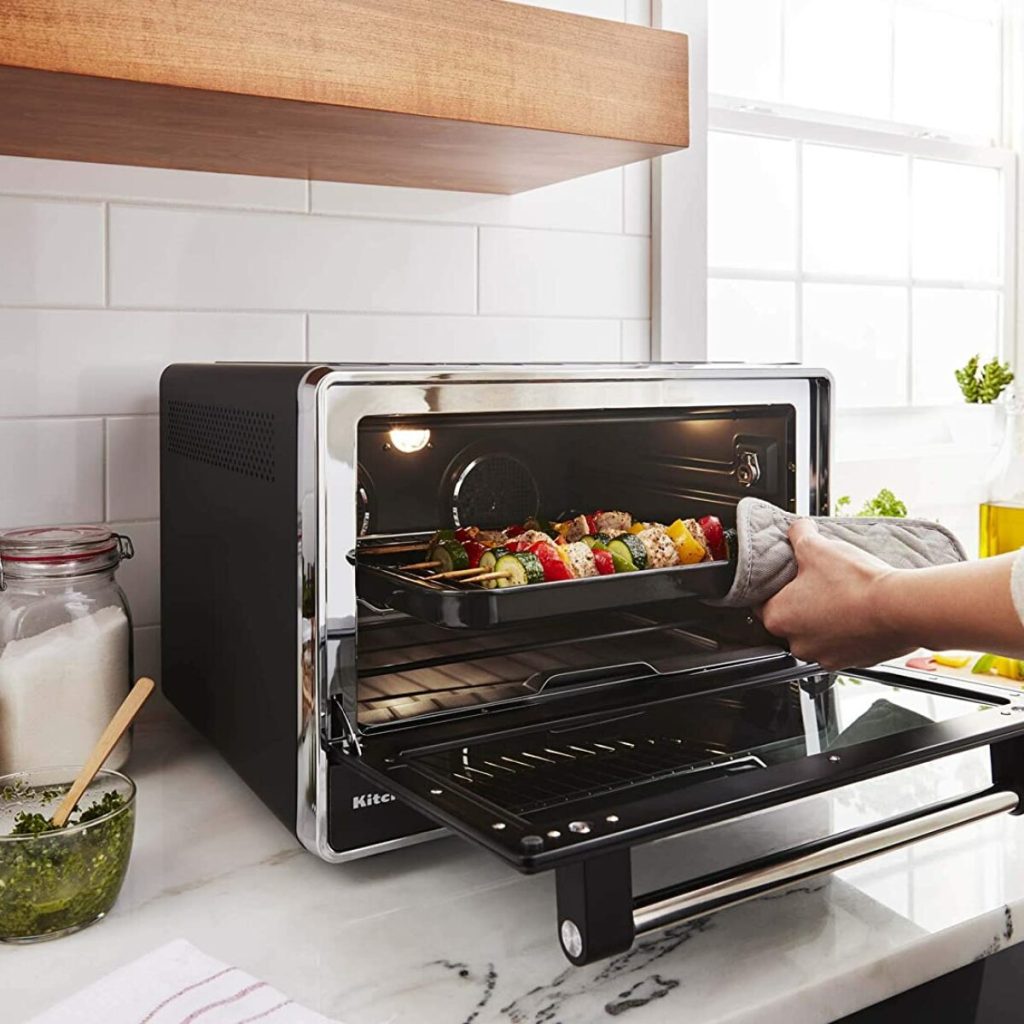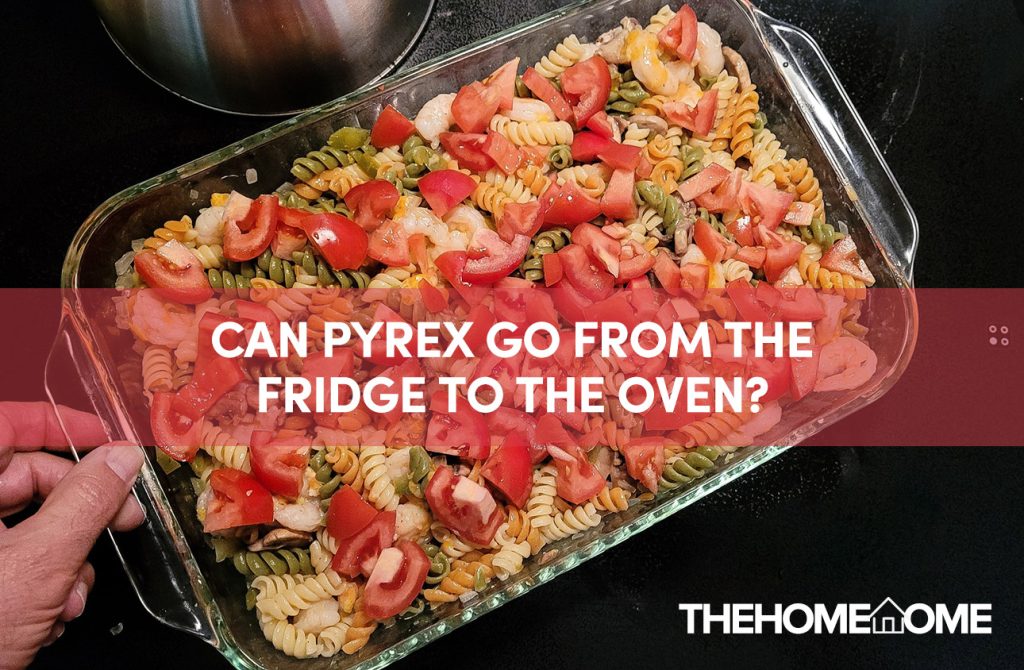Whether Pyrex can go from the fridge to the oven is not so much of a mystery. Pyrex glassware has been a kitchen companion for so many years because of its strength and versatility. A lot of times they have been passed down from one generation to the other, that’s to show how durable and long-lasting pyrex dishes are.
This however has led to the assumption that Pyrex kitchenware can instantly go from the fridge to the oven and vice versa without any implications.
Putting a cold Pyrex dish into the oven exposes it to trauma which can cause the glass to break or shatter. Sudden temperature variations are bad for Pyrex glassware as they can lead to thermal shock, so it’s recommended that you leave them to cool at room temperature for about one or two hours before proceeding to put them in the oven.
Before taking a risk of putting your pyrex from the fridge into the oven, it’s best to gather all the information you need to know.
Can Pyrex Go From The Fridge to The Oven?
Pyrex glassware is oven-safe and it is perfect for heating and reheating your meals. It is generally known that they are designed to resist extreme temperatures, but one thing we might not know is that they can shatter when they experience rapid temperature fluctuations.
The term for this is thermal shock and the traumatic condition causes the glass to shatter into pieces.
Avoiding putting a cold pyrex bowl in the oven at all costs means adhering to pyrex glassware guidelines. Unfortunately, a lot of people still break the rules. Sometimes the glass doesn’t break, but the structural integrity of the glass is damaged. And using the glass next time could be dangerous.
How To Safely Put Pyrex In The Oven From The Fridge
Pyrex glasses exploding or shattering to pieces in the oven is often very common and dangerous, for this reason, proper care should always be taken when dealing with them. You can safely put your pyrex glassware from the fridge to the oven but there are precautions to take;
1. Leave pyrex to cool at room temperature
You might find this hard especially when you are in a hurry to get things done, but we can’t overemphasize the fact that it is very important to let the glass warm up at room temperature before heating it in the oven.
As simple as it seems, this goes a long way to avoiding kitchen accidents like shattered glass. Allow the glassware to sit on the countertop for at least 1-2 hours and once it’s warm enough you can now put it in the oven.
2. Preheat Your Oven

A typical pyrex dish is labeled “preheated oven safe” meaning that it is the best way to use your glassware in the oven. Allowing your oven to preheat may seem like a waste of time but it isn’t so. This gives your oven enough time to attain a stable temperature suitable for your pyrex dish.
But when you put a pyrex bowl fresh from the refrigerator into an oven you just turned on there’s a very high chance that the pyrex glass will shatter because of the sudden temperature change.
Now we don’t want this to happen so it’s best we avoid it by allowing the oven to preheat, and also leaving the pyrex glass to cool at room temperature.
3. Ensure that the structure of the glassware is intact
If a pyrex bowl is cracked or chipped do not transfer it from the fridge to the oven as its structural integrity is damaged. There’s a tendency that it would shatter even if precautions were taken. Always ensure that your glassware is in good condition before putting it in the oven or the fridge as the case may be.
Pyrex Glassware Temperature Limit
One thing you must have in mind is that when using a pyrex container to cook or bake it is safe to keep the temperature around 425°F to 450°F for the most part.
Although it is expressly stated that Pyrex can take the heat as high as 490-500°F, most people prefer to go way lower. The reason is that the higher the heat the higher the chances of it suffering damage. So it’s best to stay below 450°F as it’s the safest temperature.
And when it’s not in the oven, you should also take preventive measures to ensure that there are no abrupt changes in temperature.
Borosilicate Glass vs Soda-lime Glass
| Borosilicate glass | Soda-lime glass |
|---|---|
| Used in a chemistry laboratory | Used in the kitchen as cookware |
| They are thermal shock resistant | They are not thermal shock resistant |
| They are less dense, stronger, and durable. | They are denser and less durable. |
Frequently Asked Questions
Will Pyrex crack going from fridge to oven?
Yes, it will. This can happen as a result of the abrupt change in temperature which causes the glass to break. Always avoid extreme temperature swings when using Pyrex cookware or bakeware. In a nutshell, cold pyrex dishes should not be heated in the oven, and vice versa. As this may fracture or damage the structure of the glass.
Is Pyrex resistant to thermal shock?
Have in mind that your Pyrex glassware may be oven-safe but it is not resistant to thermal shock, and it could explode or shatter when there’s a sudden temperature change. Like for example taking your pyrex glass from the fridge or freezer and putting it straight in the oven will just traumatize it.
Can Pyrex glassware go in the oven?
Yes, Pyrex glassware is very safe to put in an oven. However, it is important to note that it is preheated oven-safe. You’ll also need to be cautious of how quickly you introduce it to heat or cold temperatures to avoid the occurrence of thermal shock. Also, be certain that the glass is not chipped or cracked before putting it in the oven.
Conclusion
We are quite aware that pyrex glassware is good to go in the oven, but many might not know that it’s a bad idea to take your pyrex bowl from the fridge to the oven immediately.
As sudden thermal changes in pyrex can cause them to explode, break or explode.
This article recommends that the pyrex glassware should be left to cool at room temperature for a maximum of 2 hours before transferring it to the oven. With this, you can prevent unfortunate incidents from occurring as a result of thermal shock.

